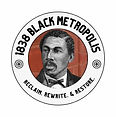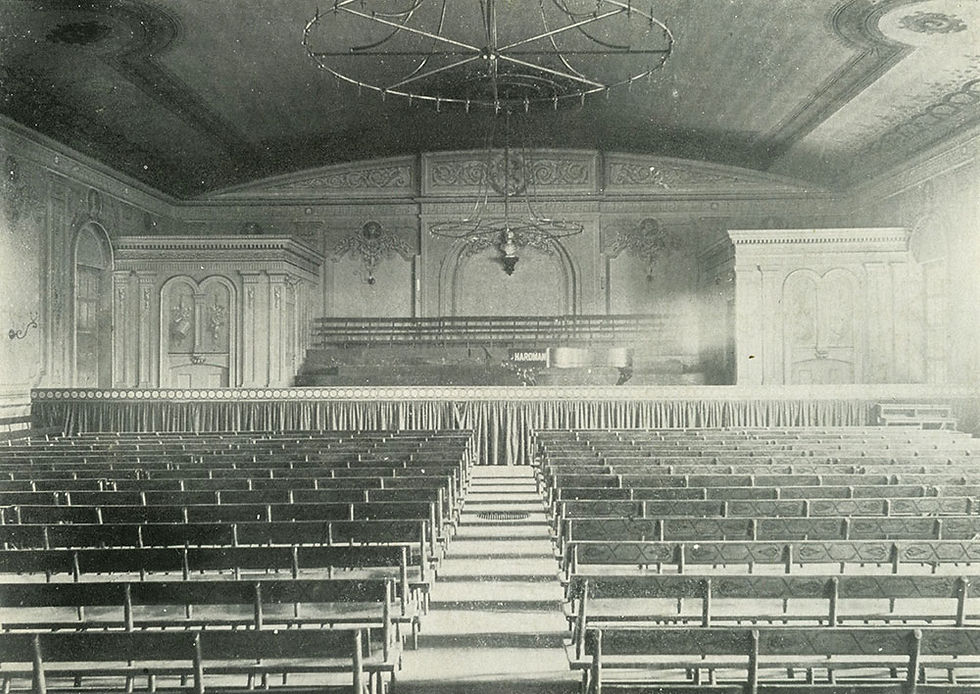Musical Fund Hall and Taxation Without Representation
- 1838 Black Metropolis
- Jul 6, 2023
- 3 min read
Updated: Nov 13, 2023
You know how you've heard all about how Taxation without Representation is a really bad thing? As citizens we pay our taxes but we get a way to have some influence on how those monies are spent through our representatives in congress, who theoretically, respond to our needs. That is Taxation WITH Representation. Taxation WITHOUT Representation is when you pay taxes but you can't vote, so you have no way to influence, no power, no say in how taxes are spent.
Back in the American Revolution taxation without representation was a rallying cry against the British. For example, this page from the National Constitution Center describes how anger about taxation without representation was a major motivational force to go to war.

Yet a mere 60 years later, and despite the fact that taxation without representation was important enough to be a cause for war, Pennsylvanians voted to remove the right to vote for 40,000 free Black people, effectively creating a taxation without representation situation all over again.
On January 20, 1838, the Pennsylvania Legislature met at Musical Fund Hall at 8th and Locust in Philadelphia to decide how to amend the Pennsylvania constitution. One of the proposals on the table was to insert the word 'white' in the definition of who could vote.
To add insult to injury, Black men started to get ejected from watching the debates.
Pittsburgh leaders John Vashon and Lewis Woodson were forcibly removed from the building while James Forten, Jr, Thomas Butler and J.P. Burr were not allowed in the building.

Watching the proceedings was a right that was violently stripped away. (see Smith, page 294).

Musical Fund Hall was literally surrounded by Black success. Legislators were steps away from and probably would have had to walk through and past Black schools, businesses, substantial homes, and multiple church buildings on their way to the hall. But as Eric Lidell Smith noted in his in-depth history of this vote;"It did not matter." And in this environment, they voted to remove the right to vote - to essentially remove citizenship rights - from all Black people in Pennsylvania.
Up to that point, Black leaders and white allies had worked tirelessly to convince the legislature to maintain the right to vote. But after the January decision they realized that they had to do a full court press. While the vote to make the change to the constitution had occurred, it had to be ratified by the people of Pennsylvania to finally change the constitution. And that ratification vote would occur in October, 1838.
So they got busy. They met here at St. Paul's Lutheran Church on Quince (now the Mask and Wig Club). It probably looked a lot like this then.

They kept good notes of their activities and included that information in their reports. Which is how we know all of this now.

They decided to wage a hearts and mind campaign. They would produce information that they could widely distribute that they hoped would influence Pennsylvanians to vote against the new constitution.
They gathered the facts.
The Pennsylvania Abolition Society funded a census taken by Charles Gardner, pastor of the First African Presbyterian Church and PAS Member Benjamin Bacon. This census provided the data that you see in our visualizations and maps on this site. It counted all the free Black people in the city, gathering tax and wealth data to prove the financial stability and impact of Black citizens. As such it is the only known full statistical snapshot of free Black people in that period.
They produced a report on the census called The Report on the Present State and Condition of the Colored People of Philadelphia.
Here is our map with the data from these reports:
They developed a listing of Black business and tradespeople called The Register of Trades of the Colored People of Philadelphia. This is the source for the 'Black Business' layer on our maps..
And they appealed to the heart.
An appeal was written by Robert Purvis to fellow citizens in Pennsylvania to not disenfranchise their own neighbors. This appeal was called The Appeal of the Forty Thousand Citizens Threatened with Disenfranchisement.
The Report from the Census, the Register of Trades and the Appeal of the 40,000 are here for you on this page to read and understand.
Despite these efforts, the constitutional change was ratified by the people of Pennsylvania in October, 1838. Free Black people had to continue to pay taxes. This was a true taxation without representation and it continued until after the Civil War.








